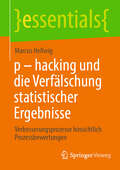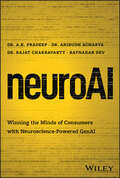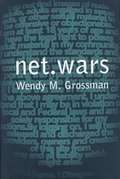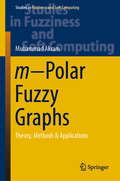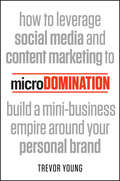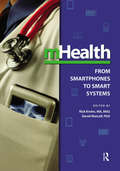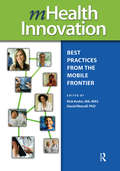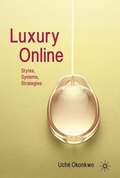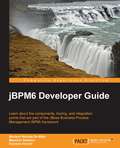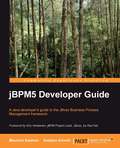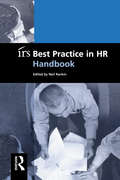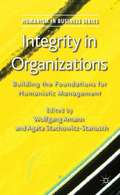- Table View
- List View
pymetrics: Rapid Growth
by John R. Wells Benjamin WeinstockIn August 2018, pymetrics, a solution offering neuroscience-based recruiting tests, closed a $40 million funding round that valued the business at $160 million. Over 60 companies around the globe were using pymetrics tests in their recruiting process, including Unilever, Hyatt, and Accenture. Clients were seeing real impact, including time and cost reductions - 75% reduction in time-to-hire and 25% reduction in recruiting costs, as well as significant increases in diversity (in some cases over 100%) -and new-hire performance through metrics like retention. In addition, 1 million job candidates around the world had played pymetrics games to obtain career guidance. pymetrics tools offered significant advantages over traditional personality tests such as Myers Briggs because they measured brain function rather than responses to self-administered questionnaires. They also collected a lot more data very quickly and measured critical brain functions associated with effective executives, ranging from analytical capacity and risk aversion to attentiveness, resolve, ability to interpret emotions, speed of learning, and capacity for trust. In early 2019, the company was expanding rapidly. It employed nearly 100 people and operated out of 4 offices around the world. CEO Frida Polli was contemplating next steps. What should the priorities be? Was it more important to add more clients or develop more services to build current clients? How many global offices should the company operate, and how should these be organized? And could the company make more of its bias-free recruiting processes in a world where regulation against discrimination was becoming increasingly important?
pymetrics: International Expansion
by John R. Wells Benjamin WeinstockIn August 2018, pymetrics, a solution offering neuroscience-based recruiting tests, closed a $40 million funding round that valued the business at $160 million. Over 60 companies around the globe were using pymetrics tests in their recruiting process, including Unilever, Hyatt, and Accenture. Clients were seeing real impact, including time and cost reductions-75% reduction in time-to-hire and 25% reduction in recruiting costs, as well as significant increases in diversity (in some cases over 100%)-and new-hire performance through metrics like retention. In addition, 1 million job candidates around the world had played pymetrics games to obtain career guidance. pymetrics tools offered significant advantages over traditional personality tests such as Myers Briggs because they measured brain function rather than responses to self-administered questionnaires. They also collected a lot more data very quickly and measured critical brain functions associated with effective executives, ranging from analytical capacity and risk aversion to attentiveness, resolve, ability to interpret emotions, speed of learning, and capacity for trust. In early 2021, the company was expanding rapidly. It employed nearly 100 people and operated out of four offices around the world. CEO Frida Polli was contemplating next steps. What should the priorities be? Was it more important to add more clients or develop more services to build current clients? How many global offices should the company operate, and how should these be organized? And could the company make more of its bias-free recruiting processes in a world where regulation against discrimination was becoming increasingly important?
pymetrics: Foundation
by John R. Wells Benjamin WeinstockIn 2013, CEO Frida Polli was contemplating the next steps for her start-up business, pymetrics. After receiving her PhD in neuropsychology and MBA from HBS, she was determined to put her scientific and academic knowledge to work to build a business solving real world problems. To this end, her team at pymetrics had adapted a set of robust neuroscience-based computer exercises designed to measure a number of elements of brain functionality and apply these exercises to the world of talent assessment. In just about 25 minutes, these tests compiled a powerful cognitive, social, and emotional profile of the individual that could match the output of experienced interviewers or much longer psychometric testing programs. And the added benefit was that these tests, unlike interviews, discussion panels, or self-reported questionnaires, were hard to "game" because the underlying brain function and rate of learning showed through. Frida believed that her exercise suite would be invaluable to recruiters and had demonstrated to a hedge fund and a major consulting firm that it was much more cost effective than their traditional approaches and could be used to broaden their search for the best talent. As she got out of the cab at LaGuardia to catch the plane for Boston, she wondered what the Harvard Business School class she was about to address would think of her ideas and how they might suggest she implement them.
pymetrics: Early Days
by John R. Wells Benjamin WeinstockIn 2013, CEO Frida Polli was contemplating the next steps for her start-up business, pymetrics. After receiving her PhD in neuropsychology and MBA from HBS, she was determined to put her scientific and academic knowledge to work to build a business solving real world problems. To this end, her team at pymetrics had adapted a set of robust neuroscience-based computer exercises designed to measure a number of elements of brain functionality and apply these exercises to the world of talent assessment. In just about 25 minutes, these tests compiled a powerful cognitive, social, and emotional profile of the individual that could match the output of experienced interviewers or much longer psychometric testing programs. And the added benefit was that these tests, unlike interviews, discussion panels, or self-reported questionnaires, were hard to "game" because the underlying brain function and rate of learning showed through. Frida believed that her exercise suite would be invaluable to recruiters and had demonstrated to a hedge fund and a major consulting firm that it was much more cost effective than their traditional approaches and could be used to broaden their search for the best talent. As she got out of the cab at LaGuardia to catch the plane for Boston, she wondered what the Harvard Business School class she was about to address would think of her ideas and how they might suggest she implement them.
pymetrics (B)
by John R. Wells Benjamin WeinstockIn March 2013, pymetrics CEO Frida Polli visited Harvard Business School to listen to a section of MBA students from the class of 2013 to discuss her business plan and provide feedback on the tests they had taken to identify career opportunities. Polli had developed a series of neuroscience-based tests to measure brain function and map this to the profiles of successful executives. She believed that these could collect much more data than conventional psychographic tests in much less time, and it would be much more difficult for the candidate to "game" the system. Polli's goal was to help companies recruit more effectively. In preparation for the class, the MBA students had all taken the tests. She looked forward to discussing the results.
pymetrics (A)
by John R. Wells Benjamin WeinstockIn 2013, CEO Frida Polli was contemplating the next steps for her start-up business, pymetrics. After receiving her PhD in neuropsychology and MBA from HBS, she was determined to put her scientific and academic knowledge to work to build a business solving real world problems. To this end, her team at pymetrics had adapted a set of robust neuroscience-based computer exercises designed to measure a number of elements of brain functionality and apply these exercises to the world of talent assessment. In just about 25 minutes, these tests compiled a powerful cognitive, social, and emotional profile of the individual that could match the output of experienced interviewers or much longer psychometric testing programs. And the added benefit was that these tests, unlike interviews, discussion panels, or self-reported questionnaires, were hard to "game" because the underlying brain function and rate of learning showed through. Frida believed that her exercise suite would be invaluable to recruiters and had demonstrated to a hedge fund and a major consulting firm that it was much more cost effective than their traditional approaches and could be used to broaden their search for the best talent. As she got out of the cab at LaGuardia to catch the plane for Boston, she wondered what the Harvard Business School class she was about to address would think of her ideas and how they might suggest she implement them.
p - hacking und die Verfälschung statistischer Ergebnisse: Verbesserungsprozesse hinsichtlich Prozessbewertungen (essentials)
by Marcus HellwigDie Signifikanz einer statistischen Aussage wird mit p bezeichnet, als probabilistische Größe. Es gibt Kritik an der Aussagekraft des p-Wertes dahin, dass er in der Statistik mitunter dahingehend missbraucht wird, dass Effektgrößen bewusst verfälscht werden. Dieser Missbrauch äußert sich darin, dass an der an der Größe und Auswahl einer Datenmenge solange manipuliert wird, bis die erwünschten Parameter erreicht werden. Diese Tätigkeit wird mit - p – hacking bezeichnet. Dieses essential widmet sich der Aufklärung.
onefinestay
by Jill Avery Anat Keinan Liz KindMiranda Cresswell, marketing director, and Greg Marsh, founder and CEO of onefinestay, were grappling with branding and positioning dilemmas. onefinestay offered high-end home rentals to travelers who sought a more authentic and local experience than a typical upscale hotel might provide. onefinestay's brand had been "hacked" together quickly during the company's early years. After five years of rapid growth, Marsh brought Cresswell on board to do a comprehensive analysis of the company's brand and its positioning in the marketplace. Cresswell had spent several months gathering data and insights, and was starting to experiment with use case scenarios that took a crack at segmenting the company's customers. The preliminary results were interesting, but raised more questions than they answered, and Cresswell wondered if this was the best way to segment the market. While segmenting in this way was intriguing, it led to a branding challenge-as a start-up, it was difficult for onefinestay to have the resources to support multiple brand messages in the marketplace and different segments wanted different things from their travel experience. She pondered whether there were other ways to group customers that would allow for a more universal positioning for the brand or whether the company needed to focus on one or two segments to serve. Positioning the fledgling brand was a challenge. Who was the company competing against and how could it carve out a unique value proposition that would appeal to travelers and be differentiated from what was offered by other hospitality options? Was its current moniker "the unhotel" working for or against it?
neuroAI: Winning the Minds of Consumers with Neuroscience Powered GenAI
by A. K. Pradeep Anirudh Acharya Rajat Chakravarty Ratnakar DevIt is the most powerful revolution of this century. Neuroscience-powered GenAi enables massive impact on everything from medicine to marketing, entertainment to education, flavors to fragrances, and much more. Simply by blending cutting edge neuroscience with bleeding edge GenAi. Put humanity back at the center of GenAi. neuroAi: Winning the Minds of Consumers with Neuroscience Powered GenAi is the master guide for everyone seeking to understand this breakthrough technology; what it is, how it works, and most especially how to put it to work for competitive advantage in the marketplace. neuroAi combines learnings from advanced neuroscience with deep GenAi expertise and practical how-to's. This is a 'force multiplier,' enabling readers to gain the fullest understanding of how to apply neuroscience-powered GenAi to appeal most effectively to the hidden driver of 95% of consumer behavior: the non-conscious mind. Innovators, creatives, and corporate executives now have a blueprint of how to unleash neuroAi at scale in the enterprise. The focus is on “Top Line Growth”—build and grow revenues while exciting and winning consumers. Written by Dr. A. K. Pradeep and his team of experts at Sensori.ai, the world's only firm combining advanced neuroscience learnings with GenAi, neuroAi features a primer on neuroscience, GenAi, and the core memory structures and functions of the human brain. Dr. Pradeep's original book, The Buying Brain, broke new ground by bringing neuroscience into marketing. neuroAi takes continues this innovative journey even farther now by combining advanced neuroscience with GenAi. The book explores key topics including: How the non-conscious mind interacts with GenAi to trigger the most relevant and impactful consumer responses What are key learnings from teen brains, boomer brains, mommy brains, middle age brains that GenAi must be aware of How activating desireGPT, the brain's desire framework, strongly drives purchase intent and brand loyalty How TV shows, movies, and music can achieve higher Ratings by applying neuroscience powered GenAi to writing Scripts and Dialogs How to create Fragrance, and Flavors using neuroAi How a wide range of consumer product categories worldwide are applying neuroscience powered GenAi to foster innovation, spur sales, and build brands How to build scalable capability in neuroAi within the enterprise For business leaders and all who seek expert insight and practical guidance on how to harness this astounding technology with maximum effect for business and personal success, neuroAi serves as an inspiring and accessible resource for successful marketing in the Age of the Machine.
net.wars
by Wendy GrossmanFull text online version at www.nyupress.org/netwars. Who will rule cyberspace? And why should people care? Recently stories have appeared in a variety of news media, from the sensational to the staid, that portray the Internet as full of pornography, pedophilia, recipes for making bombs, lewd and lawless behavior, and copyright violators. And, for politicians eager for votes, or to people who have never strolled the electronic byways, regulating the Net seems as logical and sensible as making your kids wear seat belts. Forget freedom of speech: children can read this stuff. From the point of view of those on the Net, mass-media's representation of pornography on the Internet grossly overestimates the amount that is actually available, and these stories are based on studies that are at best flawed and at worst fraudulent. To netizens, the panic over the electronic availability of bomb-making recipes and other potentially dangerous material is groundless: the same material is readily available in public libraries. Out on the Net, it seems outrageous that people who have never really experienced it are in a position to regulate it. How then, should the lines be drawn in the grey area between cyberspace and the physical world? In net.wars, Wendy Grossman, a journalist who has covered the Net since 1992 for major publications such as Wired, The Guardian, and The Telegraph, assesses the battles that will define the future of this new venue. From the Church of Scientology's raids on Net users to netizens attempts to overthrow both the Communications Decency Act and the restrictions on the export of strong encryption, net.wars explains the issues and the background behind the headlines. Among the issues covered are net scams, class divisions on the net, privacy issues, the Communications Decency Act, women online, pornography, hackers and the computer underground, net criminals and sociopaths, and more.
n-Culturalism in Managing Work and Life: A New Within Individual Multicultural Model (Springer Series in Emerging Cultural Perspectives in Work, Organizational, and Personnel Studies)
by Andre A. PekertiThis book introduces the concept of n-Culturalism – a play on the notation of sub-sample size indicating that multiple and different samples can exist within a body of work/research. It suggests that n-Culturals are a different type of multicultural individual, with different skills and abilities. At the same time, it contends that because n-Culturals represent a different type of multicultural, they also face different challenges that many non-multicultural individuals do not encounter. Lastly, it discusses the idea that being multicultural is manageable and offers opportunities for those who embrace it rather than avoid it.
m−Polar Fuzzy Graphs: Theory, Methods & Applications (Studies in Fuzziness and Soft Computing #371)
by Muhammad AkramThis book provides readers with an introduction to m-polar fuzzy graphs and m-polar fuzzy hypergraphs, covering both theories and applications. A special emphasis is given to m-polar fuzzy graphs at the aim of filling a gap in the literature, namely the absence of a mathematical approach to analyze multi-index, multipolar, and multi-attribute data. The book describes metrics and labeling in m-polar graphs, m-polar fuzzy matroids. It also discusses in detail important applications in decision-making problems and imaging processing. The book is expected to stimulate the curiosity of mathematics, computer scientists, and social scientists alike, and to provide both students and researchers with the necessary knowledge to understand and apply m−polar fuzzy graph theory.
modum.io (B): Bidding Farewell to Crypto
by Erik Hofmann Laura Huang Alex Murray Maximilian EnthovenSupplement
microDomination
by Trevor YoungHow to harness your passion, develop your platform, and build a community of fans to sustain your micro-businessIf you dream of launching your own business, but aren't sure what that business should be, microDomination has the answer. This new book from entrepreneur and communications guru Trevor Young, shows you how to tap into your particular area of expertise and build a small business around what you know and love. No matter what particular subject you're knowledgeable in, from dog training to cooking to financial planning, microDomination shows you how to build a brand around yourself and turn that brand and expertise into profits even from the comfort of your own home.In the first part of the book, Young uses real-life examples to introduce you to the businesspeople--or "micro mavens"--who are living their dreams and earning money doing what they love. The second part of the book reveals the nuts-and-bolts strategies and tactics you can use to emulate their success and achieve your goal of "microdominating."Includes inspirational case studies and practical advice on starting a micro-business based on your talent or expertiseFeatures actionable guidance on using content marketing and social media to grow your brand and businessWritten by a leading thinker in the fields of public relations, marketing, and communicationsIf you're stuck in a dead-end job or just dream of turning your hobby into a business, microDomination gives you a proven plan for turning your passion into prosperity.
mHealth: From Smartphones to Smart Systems (HIMSS Book Series)
by Mas, Metcalf David Rick Krohn Ma, Mas, Metcalf David Rick Kroh MamHealth: From Smartphone to Smart Systems provides a high level and comprehensive survey of the emergence of mobile technology healthcare. This book looks beyond the already-popular devices and apps associated with mHealth, exploring the major role this technology could play as healthcare steers inexorably toward an architecture
mHealth Innovation: Best Practices from the Mobile Frontier (Himss Book Ser.)
by Rick Krohn; David MetcalfThe editors of the HIMSS Books' best-seller mHealth: From Smartphones to Smart Systems (603) have returned to deliver an expansive survey of the initiatives, innovators, and technologies driving the patient-centered mobile healthcare revolution. mHealth Innovation: Best Practices from the Mobile Frontier explores the promise of mHealth as a balance between emerging technologies and process innovations leading to improved outcomes-with the ultimate aim of creating a patient-centered and consumer-driven healthcare ecosystem. Examining the rapidly changing mobile healthcare environment from myriad perspectives, the book includes a comprehensive survey of the current-state ecosystem-app development, interoperability, security, standards, organizational and governmental policy, innovation, next-generation solutions, and mBusiness-and 20 results-driven, world-spanning case studies covering behavior change, patient engagement, patient-provider decision making, mobile gaming, mobile prescription therapy, home monitoring, mobile-to-mobile online delivery, access to care, app certification and quality evaluations, mixed media campaigns, and much more.
luxury online
by Uché OkonkwoThis new book focuses on the analysis of the online strategy and development of the luxury industry, tracing the evolution of the Internet from a means of communication to a trade and distribution channel. The author provides a comprehensive evaluation and a critical assessment of the tactics required for the management of luxury brands online.
jBPM6 Developer Guide
by Mauricio Salatino Esteban Aliverti Mariano Nicolas MaioIf you are a Java developer or architect who needs to have a better understanding of how Business Process Management frameworks behave in real-life implementations, this book is for you. This book assumes that you know the Java language well and are familiar with some widely used frameworks such as Hibernate. You should also know the basics of relational databases and Maven-based applications.
jBPM Developer Guide
by Mauricio SalatinoThis book is a complete developer's guide to working with jBPM in a J2EE enterprise environment. It is packed with examples of implementations that will provide you with all the experience needed in real-life implementations. Extensive discussions about how the framework is implemented internally will contribute to creating a robust knowledge of when and how your projects will include this framework. This book is mainly targeted at Java developers and Java architects who need to have a deep understanding of how frameworks behave in real-life implementations. The book assumes that you know the Java Language well and also know some widely used frameworks such as Hibernate and Log4J. You should also know the basics of relational databases and the Eclipse IDE. A brief introduction to Maven2 is included in this book but extra experience might be needed for more advanced usages.
iyzico: Fundraising in Emerging Markets (B)
by Gamze Yucaoglu Marco Di MaggioThe case opens in July 2016 as Barbaros Ozbugutu, co-founder and CEO of the Istanbul-based payment technology start-up iyzico, contemplates the pros and cons of the different term sheets the company has received for its Series C round. The case then informs the reader about some changes in circumstances that affected the terms of the shortlisted offers. At the end, the case poses this question: Being faced with worsening terms in a volatile environment, should Ozbugutu go ahead with the round, or should he wait and try again at a later point in time? <p><p> This case provides an opportunity for students to: Explore how volatility affects startups during fundraising and the different options that founders face to sustain their company's operations and growth at times of turmoil. Consider negotiation strategies and decision-making during turmoil in the financial markets. Develop a deeper understanding of how founders navigate major obstacles in their company's lifecycle and think under pressure.
iyzico: Fundraising in Emerging Markets (A)
by Gamze Yucaoglu Marco Di MaggioThe case opens in 2016 as Barbaros Ozbugutu, co-founder and CEO of the Istanbul-based payment technology start-up iyzico, contemplates the offers the company received for its Series C round. The case then describes iyzico's origins and provides a detailed overview of the business model and growth story that led iyzico to dominate the industry in Turkey within three years of its founding. Having raised A and B rounds from local and institutional investors in 2014 and 2015 respectively, in 2016 Ozbugutu believes that iyzico could benefit from another round, this time from international venture capital, to reach its aggressive growth targets. In the summer of 2016, after an intense few months of talks with potential investors, Ozbugutu was looking at five competitive term sheets from funds with great fintech know-how and emerging markets experience. From the previous rounds, he knew that if he chose the right investors-ones who could also act as advisors-surprises would be rare. He now needed to weigh the pros and cons of the different term sheets and VCs and decide which offers to ultimately accept.
irs Managing Conflict in the Workplace
by Heatheri FalconerConflict, bullying and harassment can destroy the foundations of the most enterprising organisations.Bullying is now a key complaint received by HR departments. Destructive conflict creates stress, which can lead to poor morale and performance, increased staff turnover and an overall decline in organisational effectiveness.The good news is destructive conflict can be reduced – but this is a sensitive issue, requiring managers to call on tried and tested techniques.Published for HR and line managers, IRS Managing Conflict in the Workplace will help employers to recognise and resolve destructive conflict issues more effectively, enabling them to become more positive, productive and efficient. It gives invaluable advice on conflict prevention, mediation and negotiation; it explains how to manage conflict in a wide variety of situations; and includes guidance on the new statutory requirements for disciplinary and grievance procedures.The handbook will enable HR professionals to:• recognise the sectors, departments and types of individuals most prone to conflict• measure the costs of conflict• understand and comply with the law on the employer’s duty of care• spot potential problems, recognise bullying behaviours, understand the difference between constructive conflict and bullying and harassment, conduct a risk assessment and take preventative action• establish, communicate and monitor effective policies and procedures• train staff and managers in how to manage conflict effectively• reach agreement through negotiation• use conciliation and mediation to resolve difficult situationsAlso included is best practice advice, sample conflict management policies, case studies, checklists and legal compliance.
irs Best Practice in HR Handbook
by Neil RankinThis handbook provides HR professionals with a comprehensive desktop reference guide to best practice.It draws on new and exciting IRS research, surveys and case studies and has been written in a practical way making full use of checklists and examples.Providing best-practice guidelines from named organizations, this new handbook is designed to show you how to approach a wide range of HR and related areas.The handbook also gives you compliance material in an easy-to-use format, clarifying what the law requires.
integrity in organizations
by Wolfgang Amann Agata Stachowicz-StanuschGoes beyond the call for more humanistic management in the aftermath of a series of corporate scandals and the recent financial crisis, and offers advice on how we can build more humanistic organizations with the help of integrity. The authors shed light on leadership, governance and further implementation issues.
inge watertechnologies, GmbH
by Carin-Isabel Knoop Ramana Nanda Markus MittermaierUsing the financing history and exit choices of a German clean-tech startup as a lens, this case explores the reasons why venture-backed entrepreneurship is much lower in Germany that the US, despite a robust SME sector and large-corporate innovation in Germany. It also shows the tight link between investor incentives and a startup's product market strategy, including differences between "pure-play" VCs and corporate venture capital investors.

